Text
Colour Perspectives On Zubaran
Seville, at the onset of the 1600's, was a city of wealth and prosperity, full of convents, parishes, hospitals, an immense cathedral nearing completion. Zurbarán was the son of a cloth merchant and he replicated those cloths in paint in each of his pictures: their heaviness, the thick folds of the woollen habits, the coarse threads of tablecloths, the stiffly woven Hessian in the Franciscans' sackcloth habits, the green and strawberry-red silk of gowns or the sumptuous brocades worn by other saints, in imitation of the fantastical costumes and ideas being worn on theatre stages or arriving from Venice.
Birth of the Virgin
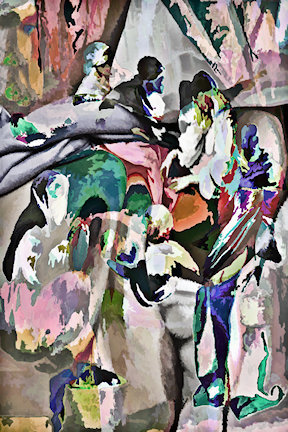
St Francis with a Skull

Virgin and Child with St John

0 notes
Text
Discovering by Looking
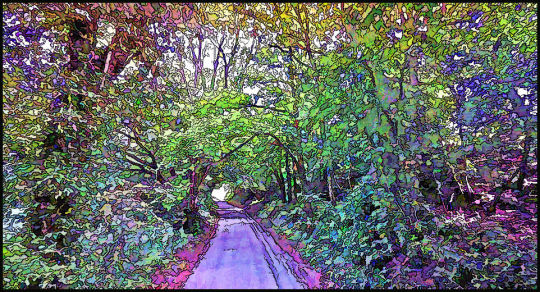
God’s grandeur; a ‘ Suffolk gull ( inscape)

God’s grandeur; a ‘Suffolk gull. the instress
The Jesuit priest/poet Gerard Manley Hopkins wrote the sonnet “God’s Grandeur” in 1877 to convey his reverence for the magnificence of God and nature. The background was his despair about the way that humanity has seemed to lose sight of the close connection between God and nature during the Industrial Revolution. The word "grandeur" means grandness or magnificence and was used by the semi Christian Charles Darwin in The Origin of Species. For him, grandeur was the wonderful things generated by natural selection, ‘the war of nature’ had a simple and chaotic beginning to endless forms and ways of life.
“Thus, from the war of nature, from famine and death, the most exalted object which we are capable of conceiving, namely, the production of the higher animals, directly follows. There is grandeur in this view of life, with its several powers, having been originally breathed into a few forms or into one; and that, whilst this planet has gone cycling on according to the fixed law of gravity, most beautiful and most wonderful have been, and are being, evolved.”
In his journals, Manley Hopkins used two terms, "inscape" and "instress" to define the visual system by which we are able to select things in our surroundings and pass on our feelings about them to others. By "inscape" he means the unified complex of characteristics that give each thing its uniqueness and that differentiate it from other things, and by "instress" he means the force of being which holds the inscape together and carries it whole into the mind of the beholder from which it reappears as a personalised poem or other art form. The system in which inscape and instress are major components of learning by seeing is known as mindfulness. Mindfulness is a type of meditation in which you focus on being intensely aware of what you're sensing and feeling in the moment, without interpretation or judgment (the inscape). It is a source to creativity, as an integral part of the dynamic attributes of our perceptual and conceptual systems (the instress).
“There is one notable dead tree . . . the inscape markedly holding its most simple and beautiful oneness up from the ground through a graceful swerve below (I think) the spring of the branches up to the tops of the timber. I saw the inscape freshly, as if my mind were still growing, though with a companion the eye and the ear are for the most part shut and instress cannot come.”
Hopkins says "unless you refresh the mind from time to time you cannot always remember or believe how deep the inscape in things is." Hence, an object's inscape is not truly discovered until a poet combines observation with self-examination. The final step of the process is achieved by taking what has been discovered and subsequently studied to capture the object's essence on paper. If you have a companion with you the inscape cannot be examined and reported on in this way. Nevertheless, we are surrounded by inscapes; they permeate everything that we see and do (Fig 8).
In 1872 Hopkins discovered the philosophy of Duns Scotus (1265/66–1308) who was one of the most important and influential Christian philosopher-theologians of the High Middle Ages. He found that Scotus has put forward a theory of haecceitas, not unlike his own theory of inscape. Scotus argues that every thing/every natural phenomenon contains within itself individual properties (principle of individuation) which differentiate it from every other thing. He argues that each thing possesses intrinsic qualities which make it ‘this thing’ [= haecceitas] rather than that thing. It seemed to Hopkins that this endorses his own vision of the natural world.
What is more, it becomes clear that St Ignatius Loyola (1491-1566) has himself derived from Duns Scotus the very principle upon which he founded the Society of Jesus: ‘Man was created to praise, revere and serve God.’ As a Jesuit, Hopkins realises that he is theologically entitled to his perception of the natural world in which each thing, including man, has a specific purpose that reflects its glorious Creator. For a humanist or a Buddhist it is absolutely clear that facing grandeur expressed in places, systems or objects today there is no longer a need to underline some mythical or divine presence because grandeur is endemic in the thing itself.
The process of self realisation that arises from mindfulness is known as individuation. It is the discovery and experience of meaning and purpose in life; the means by which one finds oneself and becomes who one really is. It depends upon the interplay and synthesis of opposites e.g. conscious and unconscious, personal and collective, psyche and soma, divine and human, life and death.
The term inscape refers to the unifying designs by which the unique interior essences of a thing are expressed at its surface,. The word does not merely refer to what is particular and individual about an object, but defines an order or pattern by which these individual essences form an harmonious composition. For example, Manley Hopkins, in his poem, As Kingfishers Catch Fire, selected two optical images from an aquatic ecosystem, a kingfisher and a dragonfly. He selects them because of their individual colourful inscapes. The inner tensions of textures, shapes, patterns and composition by which a reader can recapture the poet's perception and experience he defines as their instress.
Inscape and instress define the actual creative process of the author and determine how it is received into the sight, memory and imagination of a reader so they can recapture the poet's perception and experience.
Manley Hopkins developed his ideas about inscape and instress around the English verse style. Can they be applied to the creation of other art forms ? Surely the answer is yes. For instance, a digital image where colour is the primary factor responsible for making it feel exciting, lively, mysterious or perhaps melancholic, defines its inscape (Fig 9). Its instress is revealed by stripping out the colour (Fig 10). The black and white image highlights more fundamental aspects of the picture, such as the subject, the textures, shapes, patterns, and the composition. The images have to be viewed as pairs.
1 note
·
View note
Text
Treekind

The Stelling Chestnut: a veteran tree
“I am kind to you,
You be kind to me’
And kindly treat me kindly”.
The cultural ecology of trees
The UKRI treescapes project is vital for the woodland expansion central to Government’s plans to combat climate change. It should also greatly enrich understanding and appreciation of the social, economic and cultural importance of trees in society. #aartes https://ukri.org/news/appointment-of-future-of-uk-treescapes-ambassadors/
Belonging together in nature
0 notes
Text
Essence of Trees
Ninian Rd. Cardiff. Copper Beech (March, 2017)

“Study the science of art. Study the art of science. Develop your senses – especially learn how to see. Realize that everything connects to everything else.”
― Leonardo da Vinci
1 Nine branched tree fractal

2 Trunk,-branch fractal grid

3 Pixelated grid

4 Application of Blending algorithm 1 Treekind 1 (Corixus; 2020)
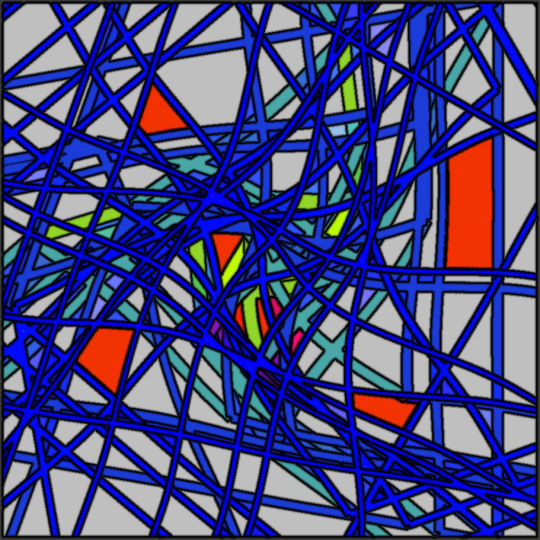
5 Application of blending algorithm 2. Treekind 2, (Corixus ; 2020)

The Dutch painter Piet Mondrian produced an extensive series of tree paintings over a period of five years between 1908 and 1913. To begin with, he simply reduced the information he chose to represent in much the same way as the Impressionists selected details to better reflect the experience of perceiving rather than evenly capturing the details across a canvas without any ‘editing’, Mondrian selected only the major boughs and left out the thinner branches and twigs. He still managed to paint a tree, with a clear tree shape, yet he was now closer to ‘essence of tree’ than ‘diagram of tree’.
Research into the anatomical essence of trees was a goal of the mathematician Benoit Mandelbrot. His discovery of fractal geometry allowed us to explore the mathematical “anomalies” of nature in their many forms. What logic shapes the growth of tree-branches? Or mountain peaks or even the pathways of lightning in a storm, the growth cycle of microbes or the formation of stars in a galaxy?. All these natural phenomena can now be decrypted thanks to fractal geometry. In his seminal work The Fractal Geometry of Nature, Mandelbrot defines a fractal as “a rough or fragmented geometric shape that can be split into parts, each of which is (at least approximately) a reduced-size copy of the whole. He is best known for his discovery in mathematics of the Mandelbrot Set, which can be programmed into basic lines of code that create an infinite stream of changing, self-similar patterns.
Fractal art is a form of algorithmic art created by calculating fractal objects and representing the calculation results as still images, animations, and media. Fractal art developed from the mid-1980s onwards. It is a genre of computer art and digital art which are part of new media art. The mathematical beauty of fractals lies at the intersection of generative art and computer art. They combine to produce a type of abstract art.
Fractal art is rarely drawn or painted by hand. It is usually created indirectly with the assistance of fractal-generating software, iterating through three phases: setting parameters of appropriate fractal software; executing the possibly lengthy calculation; and evaluating the product. In some cases, other graphics programs are used to further modify the images produced. This is called post-processing. Non-fractal imagery may also be integrated into the artwork.
The Julia set and Mandelbrot sets can be considered as icons of fractal art.
Fractal art could not have developed without computers because of the calculative capabilities they provide. Fractals are generated by applying iterative methods to solving non-linear equations or polynomial equations. Fractals are any of various extremely irregular curves or shapes for which any suitably chosen part is similar in shape to a given larger, or smaller, part when magnified or reduced to the same size.
It is interesting to speculate about what Mondrian’s tree abstraction would have led to if he had become aware of fractal trees. Would he ever have developed his signature style of the black-lined grid on a white ground, punctuated by oblongs of bright primary colours Instead of using a Mandelbrot algorithm to extract the total anatomical essence of a tree.
Treekind
1 note
·
View note
Text
Art of Climate Change

Water Over A Troubled Bridge: Susi Bellamy(2020)
Local communities in the Gudbrandsdalen region in Norway are increasingly exposed to climate-induced hazards such as floods and landslides. A core question is how community members respond to climate change and what factors contribute to more resilient communities. Interviews in Gaustad Muncipality revealed that individuals’ motivation to adapt to climate change depended largely on subjective values such as identity, place attachment, cultural values, and social networks among individuals. This means it is crucial that strategic plans for adaptation to climate change at different policy levels are experienced as relevant by community members.
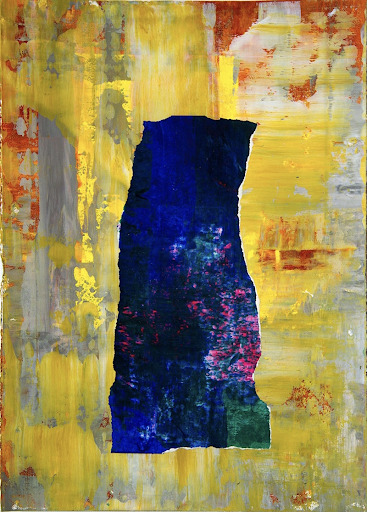
Bluestone: Susi Bellamy, (2020)
Archaeologists claim that Stonehenge was the 'Lourdes of prehistoric Europe’. The stone circle's healing 'bluestones' may have drawn people from across the continent as early as 7,000BC. There is controversy about how the bluestones came to Salisbury Plane, Some believe they were transported by the last ice sheet to scrape its way eastwards from the rock’s origins in the Precelli Hills of South West Wales. Others say that they were carried by prehistoric peoples spreading their henge spirituality from their Western homeland.

ATLANTIS: Suzi Bellamy, (2020)
The ATLANTIS project studies the effects of rising sea levels of five to six metres (due to the collapse of the West Antarctic ice sheet) for the Rhône delta, the Netherlands and the Thames estuary region. In particular, the social consequences of climate effects and adaptation to "conceivable worst case scenarios" for climate change are being studied.
In broad terms, the brain has two very different processing systems: the experiential system and the analytic system. In Western culture, we have privileged the analytic system ever since the Enlightenment. The analytic system includes rationality, logic, and analysis. It is slow and deliberate and encodes reality in abstract words, symbols, and numbers. The experiential system, in contrast, is automatic, unconscious, and intuitive. It encodes reality in association, images, and feelings. This area of brain function tends to be very strongly connected to our values, our judgments, our emotions, our attitudes, and ultimately to deeper narratives and worldviews, particularly about oneness. Since the Enlightenment, there has been a stark division of the two, and in Western culture, analysis has often been privileged over experience, reason over emotion. This assumed dichotomy underlies much of the way Western society has been organized and promoted through art.
https://www.giarts.org/article/can-art-change-how-we-think-about-climate-change
1 note
·
View note
Text
Giving it a name
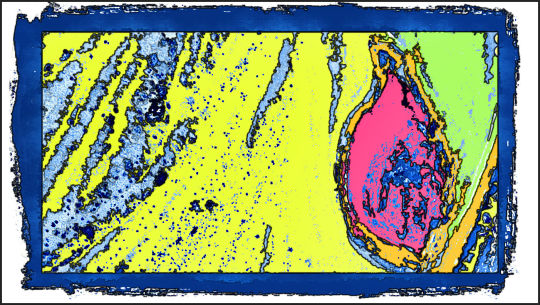
Marjorie Sarnat says:- “A painting’s title is an important part of its emotional appeal. It gives the viewer insight into what you, the artist, hopes the viewer will see or feel in your work. I think of titling a painting as writing a bit of poetry, using words that convey feelings and intangible concepts. Titles such as “Doorway to a Dream,” “Echoes in the Mountains,” and “To Catch a Moonbeam,” suggest a mood rather than a clear visual description.
Some art may work best with titles that convey visual description, such as “Study in Vermillion and Blue,” “Painting Outside the Lines,” or “Maple Trees After the Morning Snow.”
Viewers want to understand your visual narrative so they can get emotionally involved in the art experience you present to them. They want to know what you are showing them and why. Don’t fully explain it, but give them a clue. Leave a little ambiguity for the viewers to solve and make their own”.
0 notes
Text
The Nature of Nature

Castles Cornered, Corixus algorthm (2000)
“….a sense of totality has gradually entered into the artist's conception of the natural object, whether this object be plant, animal, or man, whether it be situated in the space of the house, the landscape, or the world, and the first consequence is that a more spatial conception of the object as such is born.

Castle Corner 1; Corixus, algorithm (2000)
The object grows beyond its appearance through our knowledge of its inner being, through the knowledge that the thing is more than its outward aspect suggests. Man dissects the thing and visualizes its inside with the help of plane sections; the character of the object is built up according to the number and kind of sections that are needed. This is visible penetration, to some extent that of a simple knife, to some extent helped by finer instruments which make the material structure or material function clear to us”. Paul Klee’s Noebook

Castle Corner 2; Corixus, algorithm (2000)

Castle Corner 3; Corixus, algorithm (2000)

Castle Corner 4; Corixus, algorithm (2000)
The object grows beyond its appearance through our knowledge of its inner being, through the knowledge that the thing is more than its outward aspect suggests. Man dissects the thing and visualizes its inside with the help of plane sections; the character of the object is built up according to the number and kind of sections that are needed. This is visible penetration, to some extent that of a simple knife, to some extent helped by finer instruments which make the material structure or material function clear to us”.Paul Klee’s Notebook
0 notes
Text
Art Making as Mind Mapping
Making art isn’t a direct way to change our thinking or change ourselves. It's a way of seeing ourselves. A way of seeing our inner world—our thoughts and beliefs, our feelings and emotions, our loves and aversions. When making art we are mapping our mental territory.
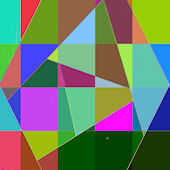
Triangulation: Corixus; computer algorithm (200)
Of all the unfamiliar territories we are confronted with today, the human mind remains, ironically, one of the most impenetrable. Unburdened by the pragmatic, collaborative concerns that characterise the mapping industry, artists can stray more regularly and farther into muddy psychological waters.
The human brain is wired to see structure, logic, and patterns. It helps us make sense of the world. In the 1920s a group of German psychologists developed theories around how people perceive the world around them, called Gestalt principles.
For example, what do you see when you look at this image?

Source: The Inspired Eye
If you’re like most people, you probably see a triangle. But in reality, all that's there are three white “pac men.” We see the triangle because our brains take the ambiguous visual information and organize it into something that makes sense to us—something familiar, orderly, symmetrical and that we understand.
When this cognitive process kicks in, our minds leap from comprehending all of the elements as individual and unrelated components to seeing the entire shape as a whole. And as a result, we perceive forms and objects where none were created.
https://www.usertesting.com/blog/gestalt-principles
http://www.tagfinearts.com/media/The_Art_Of_Mapping_Catalogue.pdf
1 note
·
View note
Text
Transcendence = Connectedness
Coming from the Latin transcendere, which means to climb beyond, transcendence refers to the feeling of having a sense of meaning beyond ourselves. There are as many ways of experiencing transcendence as there are people. It can be a religious experience of feeling close to a God, or a non-religious but spiritual feeling of connectedness to other people, nature, or the universe, or it can refer to a secular experience of rising above a difficult situation. Ultimately, transcendence is related to a feeling of meaning and purpose in the world, a sense, even if only momentarily sometimes, of the joy of being alive. In this sense art-making and art-viewing can release these feelings, evident in goose pimples and wanting to hug yourself.
‘Marble with Spaces’: Corixus, (2020)

Georgia O'Keeffe at age 96, exclaimed "I don't think much of God." Rather than allowing this to deflect inquiries, Marie Theresa Coombs went beneath it to investigate just how much the painter was attracted to the "beauty of a subject radiating a mysterious energy or presence and evoking wonder in the beholder". She highlighted just this quality in O'Keeffe's work as a sense of "an infinite emptiness fraught with presence and a light that pervades everything but whose source is nowhere visible". Thereby Coombs puts a name to the most distinctive trait in O’Keefe’s paintings that is a quality allowing us to associate O'Keeffe's art with what is most spiritual in human life and aspirations.
‘From the Faraway, Nearby’, Georgia O'Keeffe, 1937.

1 note
·
View note
Text
Human ecology: an abstract perception
‘Human Ecology’: gouache and collage, Corixus (2002).

‘Human Ecology’ Nine random quadrats. (2020)

"Much of the art experience comes down to pattern recognition. Humans are so good at it, that we often see patterns where there are none; such as animal figures in clouds or mountains. The beholder himself becomes an actor of what he sees in art; even more when the painting is abstract. Billions of incoming cues of all our senses continuously overwhelm us. Without the selection imposed on them by emotion and memory, we cannot build knowledge and meaning." - Ioan Sbârciu
A quadrat in science is part of an ecosystem selected to define its structure and dynamics. A quadrat in art (a grid) is an aid to projecting meaning into an abstract representation of cultural ecology. The proposition is that it is more satisfying to view an abstraction when it is in a square format and therefore not biased towards the subjective concepts of landscape or portrait Corixus.
“Nature, ecology and social awareness are more important than ever in art. I am a painter, not a man of many words. I am emotionally involved in my work. Appearance and disappearance of form, colour and line are my ways of expression”. Ioan Sbârciu
0 notes
Text
Living with the colours of diversity

This is a painting of the Western Ghats rainforest in India by Meena Subramaniam, entitled ‘The Garden of the Gods’..
This is what this ecosysystem looks like in a digital photograph.
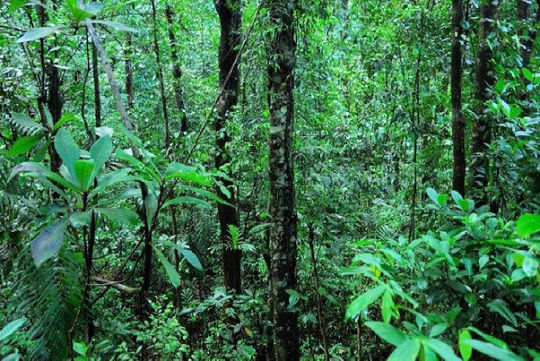
The digital colour of tropical rain forest has a hexadecimal colour code #00755e which is a dark shade of green-cyan. In the RGB color model #00755e is comprised of 0% red, 45.88% green and 36.86% blue. In the HSL color space #00755e has a hue of 168° (degrees), 100% saturation and 23% lightness. This colour has an approximate wavelength of 502.37 nm
The rainforest has long been recognized as a repository of ecological services not only for local tribes and communities, but also for the rest of the world.
The Amazonian forest is the only rainforest left in terms of size and diversity. It now hosts 40% of the world’s remaining rainforest, 25% of its terrestrial biodiversity, and more fish species than in any other river system. Ironically, as rainforest continues to disappear, scientific work from the last two decades has shed light on the critical ties that link the survival of rainforests to the rest of the world. Now as forests burn and global warming worsens, the impact of deforestation continues to gradually undo fragile ecological processes that have been refined by evolution over millions of years. In an effort to counter deforestation the World Bank led, Amazon Sustainable Landscapes Program is working through its integrated regional approach, to improve management of 82 million hectares of forest across Brazil, Colombia and Peru.
This indicates the importance of finding ways to involve people in thinking about how to engage in creating a carbon-free society. In this context art can help build awareness of biodiversity as a cultural concept. Indeed, culture and ecology are inextricably linked to art in the environmental realm. While science measures the health of the planet, art helps us visualize our complex relationship to the natural world.
Art has a connection to anything in our environment that influences its creators and is generally understood as any activity or product created by people with a communicative or aesthetic purpose—something that expresses an idea, an emotion or, more generally, a world view. It is a component of culture, reflecting economic and social substrates in its design. It transmits ideas and values inherent in every culture across space and time. Its role changes through time, acquiring more of an aesthetic component here and a socio-educational function there.
Ecological imperatives are frequently invoked by governments, corporations and certain strands of environmental activism in the name of a post-political ‘green’ consensus for which nothing less than the life of the planet is at stake. How might critical art contribute to an imagination of ecology that addresses social divisions related to race, class, gender and geography in the North and South alike? In this context, the objective of education is to apply arts reasoning to explain sustainability. Art has a unique set of tools to represent our world: irony and allegory, metaphor and humor. Science provides facts about global warming while art tells stories about climate change.
Colours have a most profound influence on the way we perceive the world. Different colors are connected to different feelings and emotions.They present a meaning beyond language and logic. Using colors is a remarkable way to alert the sense of our inner world. The imaginative experience of artistic reality, which is acquired in seeking aesthetic value, is no less concrete or less conclusive than that which is acquired in scientific research.
1 note
·
View note
Text
The Grid: linking art with science
The grid imposes a simple coherent organizing logic. Either underlaid, assisting in defining the order in a creation, or overlaid on an existing object, regulating and controlling it, the grid remains “behind the scene”, an abstract organizing system.
Although only a tool with abstract attributes, the grid has characteristics that can be understood as aesthetic, that can be used in a tactile, visible, and conceptual manner. Its rectangular form, right angles, thinness, repetitiveness, endless continuity, and transparency, all can be used not only as a defining tool but also as designed artifacts. In other words, the grid contains aesthetic values that can become present in reality as objects. As an object the grid is positioned between reality and the subject. It becomes an object yet, retains its properties as a pure organizing system. The grid exposes some unique relational properties between the viewer and reality, that otherwise will remain hidden or unnoticed.
GridLock strives to harness the transformative power of art to promote awareness, provoke dialogue, and inspire action to break the gridlock between the economics of growth and degrowth. This means addressing issues of human rights, social justice, gender equity, environmental stewardship and sustainability. Art can help to achieve these goals in creative, inspiring, and ultimately positive ways by engaging with audiences fully, creating experiences that are at once emotional and intellectual. The assumption is that a sustainable future will emerge if we build institutions that, on a practical level, sustain the natural environment and the social and technological conditions that will empower future generations to define and pursue their own conception of the good life.
There has to be a path to enhanced human flourishing built by expanding the scope of people’s choices and opportunities for personal well being. Policies that promote sustainability may well lead to some, but not unlimited, economic growth, but unlimited economic growth is not sustainable in a global culture that currently needs two planets to support it. Achieving sustainability will require an approach that de-emphasizes growth and that explicitly embraces environmental and social goals as a societal core.
Albatross with plastic
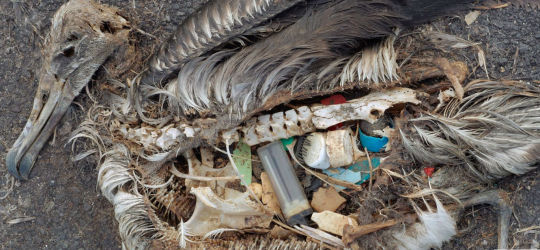
Albatross pixelated and gridded

0 notes
Text
Flora on Sand

Image #1: Flora On Sand; Watercolour, Paul Klee, 1927.

Image #2: Flora on sand; Photograph of 1 metre square sand dune quadrat.

Image #3: Image #1 processed with PaintShopPro algorithms to produce a pixelated image.
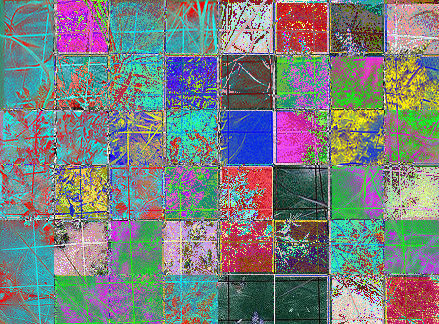
Image #4: Pixelated image copied onto Image #1 using PaintShopProXOR algorithm
0 notes
Text
Language reality and image
Wednesday, July 13, 2011
The artist is the opposite of the politically minded individual, the opposite of the reformer, the opposite of the idealist. The artist does not tinker with the universe, he recreates it out of his own experience and understanding of life.
~Henry Miller

The big question for those researching the languages of representing reality is why do some suggest that the motivations behind art and science represent conflicting impulses, while others see the two approaches as integrally related? Model-making is an essential feature of all human thinking and applies to obtaining both a scientific and an artistic understanding of the world. In both activities, the "abstraction ladder," leads from observations of a material reality to simpler models made visible using the 'languages' of numbers, diagrams, poetic descriptions and pictures. Through abstraction, art as picture making today is becoming increasingly complex and referential; aspects of culture and our ecological identity are constantly being brought to together, by either implication or association, in landscape. The conjunction of these processes in the work of Susi Bellamy, implies a new way of cross-discipline thinking, which needs clarification through the critiques of artists and/or scientists if none is provided by the artist herself.
As soon as a person starts to think she starts to criticize. Human nature is inclined to comparison and discussion, particularly now that we live in an age when the public have come to expect the artist to constantly review her relationship with images. This is usually achieved using abstract forms. The objective is to create a personal language for articulating a sharper reality of relationships between people, environment and the psyche. Explanation of a work of art involves discovering a meaning and its significance to the human condition. An important part of the critics' role is to discover and write about the intended and perceived meanings the work may have for the viewer. This is particularly important when reviewing Susi Bellamy's work because she has been for the past two decades always in the territory of experimentation. There she has engaged with research into pictorial representation aimed at the blurring of direct human references in order to reconstruct a more thoughtful relationship between people's inner and outer worlds.
From time to time she has immersed herself in the skills of representational art to create traditional still life and portraits. But her real motivation has been to apply old master techniques and palettes to create abstract metaphors of topographical mindfulness. In this endeavour she grapples with the historical procession of art in order to re-conceive, experience and revise it as a personal language.
Since the 17th century exotic shells were a favourite item in still life paintings, often in combination with large bouquets of flowers. Many would say that Susi Bellamy has picked up this historical thread of realism to explore the way randomness and precision, which come together in shell pigmentation, may give rise to pleasing patterns.
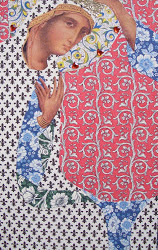
Every artist has to find a way of describing the inner truth of things. This is the unified complex of characteristics that give each thing its subjective uniqueness and differentiates it from other things. Then there comes the definition of a route to transmit it as a mental wholeness to others in the hope that it will be seen as more than a pleasing image. The term 'inscape' was invented by the Jesuit poet, Gerard Manley Hopkins, to describe inner truths of things in conjunction with the term "instress." By "inscape" he means the unified complex of characteristics that give each thing its uniqueness and that differentiate it from other things, and by "instress" he means either the force of being which holds the inscape together or the impulse from the inscape which carries it whole into the mind of the beholder. He also uses the term to mean ‘the stress within’, the force which binds something or a person into a unit.

It is possible to trace Hopkins’ ideas on the nature of perception to his early encounter in 1872 with the writings of the medieval author, John Duns Scotus (c.1265-1308). Scotus was a Franciscan friar born in Duns, in the Scottish borders, and studied and taught at the Universities of Oxford, Cambridge and Paris. He, in turn, had taken the germ of the ideas from Peter Lombard's ‘Sentences’. Peter Lombard was an Italian theologian (c.1100-c.1160-64) who wrote his book of 'sentences' in about 1150. Arranged in four parts, it discusses all aspects of theological doctrine systematically in a long series of questions. A key phrase in Scotus which seems to have been developed by Hopkins was:
‘By grasping just what things are of themselves, a person separates the essences from the many additional incidental features associated with them in the sense image… and sees what is true… as a more universal truth.’
We can take from Hopkins the essence of probing a divide between descriptive science and spirituality. For example, on 13 August 1874 he wrote;
‘ The laps of running foam striking the sea-wall double on themselves and return in nearly the same order and shape in which they came. This is mechanical reflection and is the same as optical: indeed all nature is mechanaical, but then it is not seen that mechanics contain that which is beyond mechanics’
Modern neuropsychology is investigating these two aspects of seeing and communicating because it is at the heart of both our feelings of 'belonging' and 'alienation'. In the poem "Ad Marian," Hopkins impersonates the inscape of the month of May in a pre-Christan spirtitual setting as Spring's daughter. In so doing, we see the inscape as an archetype of the Mother of all humankind, who is as vital "as Dew unto grass and tree." The poems remind us that the female principle of fecundity is ever present in the landscape. It is significant therefore that Susi Bellamy during a period of residence in Italy came to focus on the re-construction of 13th and 14th century icons of the Madonna. Her starting point was the extensive collection of Madonnas in the Venice Accademia Galleries, where they are stranded high and dry from the sea of faith which produced them seven centuries ago. What she has produced are powerful and disturbing contemporary icons of motherhood in which the naturalistic facial features of Mary and her child are enfolded in a complex expanded decorative collaged cosmos. Their instress emphasises the truth that a noisy unruly world can't take away the persona and its relationships with the processes of nature. They are most essential for each of us. These Madonna inscapes should be reassuring to anyone in the midst of a world of trivial productions that is threatening to remove what is most essential to their individuality.

Susi's choice to manipulate a powerful Christian icon is not the beginnings of cultural disavowal but an attempt to make visible and readable what for most people in the West has become withheld from comprehension and symbolisation. She has made the surfaces of the paintings visibly deeper and each Madonna is the equivalent of a mental 'big bang'.
The decorative random, yet ordered, matrix constructed from mass-produced paper patterns produces a deep cosmic depth in which many narratives are possible in the mind of the viewer. Her pictures, like the works that led up to them, are really toolkits for meditation on our affair with consumerism, which today pervades everything we are.
Every day, we move through landscapes that are the historical results of local economic processes of programmed randomness. Susi began painting on the premise that there are many ways to combine abstract language with the stylistic forms of figurative painting to reveal intermediate hidden truths of mental picturing. This is evident in her many 'halfway away/half way back' effects, which are the outcomes of moving up and down the ladder of abstraction on a quest to capture and transmit more than is visible to the naked eye. This has involved the controlled use of randomness to enable works to form freely. The Madonna pictures came after a period when she was engaged in producing formless but dynamic 'plasmas' which explored combining chaos and order of liquid paint on tilted canvas. In the end, order prevailed in which areas of colour were arranged like rows of classified rocks and vibrant microcosms constrained within golden ribbons. The Madonnas and their characteristic colour palette seem to emerge from the end point of this phase where entities coalesced like technicoloured polished sections cut through meteorites.

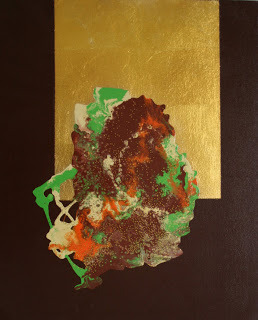
This emphasises that Susi's consistent probing approach to reveal inscapes has been based on the adoption of a distinctive, vibrant palette echoing the false digitised colours used by astronomers to delineate the complexity of galaxies and the birth and death of stars. In this respect, they are miniature expressions of cosmic thinking. Another development of randomness-with-order, was her printmaking carried out in the Florentine print workshops, which served Picasso and Henry Moore. In these experiments rows of darker, angular, horizontal structures divide up a landscape format, like inscribed stone walls. These are inscapes where the instress could focus on compartmentation as symbolising either 'belonging' or 'exclusion'.
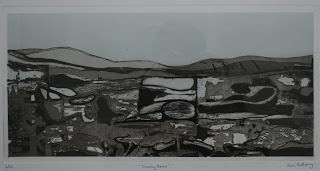
Regarding the expressive power of her work, an ambiguity of meaning is one of its most definitive characteristics. At one time you may imagine you are looking at a section of Hadrian's Wall in the empty Northumbrian landscape. Another time, the same picture may appear as a piece of crumpled patterned fabric. A jagged mass of blue might be a transient break in a threatening sky implying a forthcoming natural disaster, whereas its incidental feature was the surface of a lighted swimming pool overlooking a deep Tuscan valley in twilight. Here, as in most of her work, Susi literally harnesses randomness and makes it operate on the entities selected for exploration. Many people like her paintings, probably because, as just another species, and the result of natural selection, we seem to gladly embrace fractal and chaotic structures and work on them to discern some kind of order. In the ever-threatening world in which our biological evolution occurred, such behaviour would confer a survival advantage by reinforcing a sense of place.

With her early background in fashion journalism it was inevitable that Susi would become interested in the relationship between the frame and the picture. In contemplating a picture, the frame is generally taken for granted. It is a fait accompli, and most of us may be unaware of how powerfully the frame can influence our perception and enjoyment of the picture within. It was in Florence that she studied the classical proportions, abstracted sculptural ornament and muted patina of Renaissance and Baroque frames. Florentine frame-making is part and parcel of the family histories of master carpenters who still ply a trade as old as the Madonna icons.

The marriage of picture and frame may be harmonious or discordant, enhancing or depressing, or somewhere in between. In Susi’s view, most private and public collections contain pictures the true impact of which has been compromised by their frames - often in an insidious way - for decades or even centuries. Susi is adamant that the artist should devote much thought to the way a frame can enhance the 'performance' of an image. Her frames possess a timeless quality, not necessarily related to a specific period of interior decoration.

In all her works, Susi has produced modern icons for meditation on the birthing moments we all have when suddenly becoming aware of a new arrangement of the natural or built environment. This is a pointer to the fact that for many modern artists the instress of human adaptation to environment is a steady process of being at one with the physical laws of the universe and the random events they produce. Humanity is not the one-off supernatural project of an omniscient being.
The opening up of windows on non-religious spirituality happened for Susi Bellamy when she gave up strict control over the application of paint with a brush to dribble and paste directly onto the canvas. The actual shapes, patterns and textures were largely determined by the random dynamics of the material and her process: the viscosity of the paint and the speed and direction of its flow on the canvas. An important random factor in the making of Madonnas was the availability of commercial patterned papers. This is simply to say that throughout her career Susi has been firmly in the territory of artistic experimentation, intent on making various kinds of paintings as alternative solutions of equal worth rather than attesting to a life-long process of relentless technical development. Her consistent aim has been to render visible 'inner' or 'immaterial' phenomena. In this respect, she sits firmly at the forefront of part of the contemporary art scene, which is a play of language, reality and image. As art and science continue to bump up against each other, new images are constantly required to express new models of reality and Susi's diversity of artistic style becomes a deliberate stylistic principle of cross-disciplinary research.
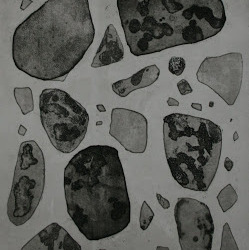

No comments:
0 notes
Text
Coal Costs Condensed 2

https://www.walesonline.co.uk/news/wales-news/harrowing-stories-worst-mining-disasters-14063380
http://www.welshcoalmines.co.uk/
https://corixus.tumblr.com/post/162126199183/coal-costs-condensed
0 notes
Text
Attaining grace 7


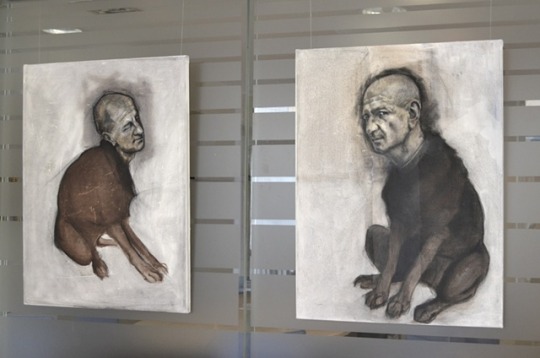






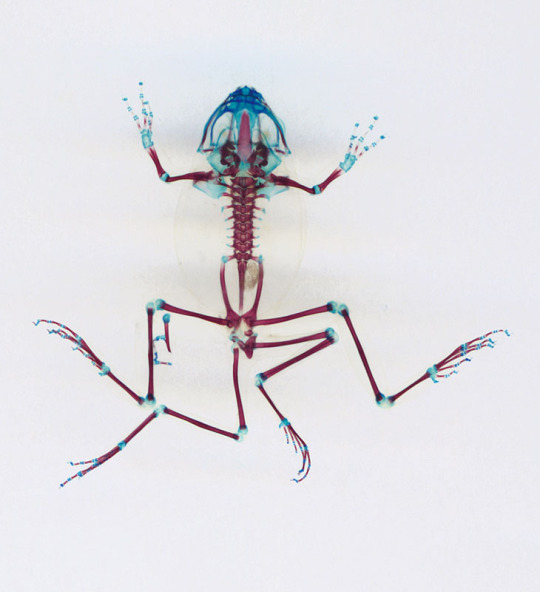
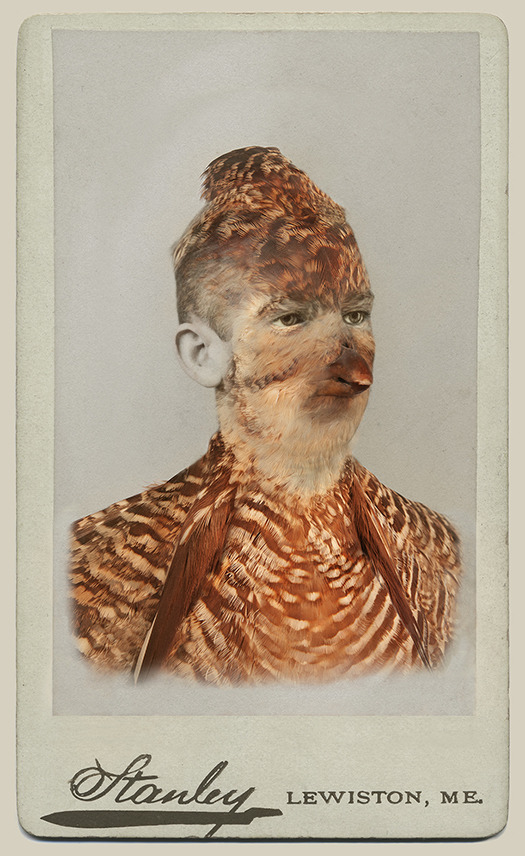


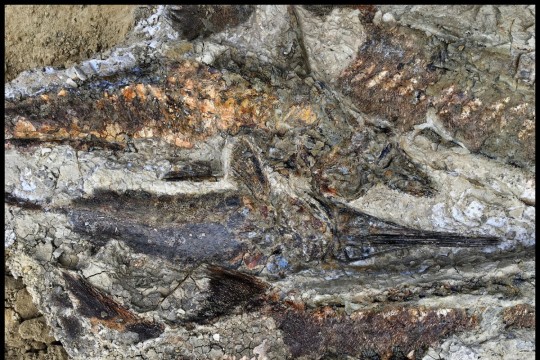
A tangled mass of fish from the deposit in North Dakota's Hell Creek formation. Photo: Robert DePalma/University of Kansas
Thirty years after Andy Warhol made a series of silkscreen prints to raise awareness of endangered species, evidence of an ongoing sixth mass-extinction event grows. Each year, Canada’s list of species at risk gets longer. A blogger at Scientific American offers an extinction countdown. Scientists provide alarming accounts and warn about “defaunation in the Anthropocence” – the elimination of wildlife from an age dominated by humans. But scientific warnings haven’t stemmed the collapse of biodiversity. Nor have well-meaning laws. Can artists open our eyes to what we are losing?
Animals were the first subjects of art, in cave paintings more than 32,000 years ago. Real and imagined creatures figure prominently in art history. Art and conservation have long been close companions: John James Audubon discovered 25 new bird species on the way to setting a new standard for wildlife illustration. Taxidermy artist Carl Akeley pioneered diorama displays for natural history museums and helped establish Virunga National Park in the Democratic Republic of the Congo to protect mountain gorillas. Artists continue to stand as society’s conscience and critics. They disrupt our complacency and broadcast calls for change. Increasingly, they are reflecting the disappearance of the animal world.
Take the pangolin, the improbable mascot of last fall’s Extinction Marathon at the Serpentine Gallery. You may never have heard of the only fully scaly mammal – the “walking pine cone,” the “artichoke with legs and a tail” – but the pangolin may be the most trafficked animal in the world. And despite an international convention prohibiting trade in endangered species, it is on the way to being eaten to extinction.
Artists are acting as agents provocateurs, forcing us to confront our kinship with other animals, to acknowledge how we are diminishing them, and to see the world as it is, was and could be.
The power of objects and images in a museum or gallery, regardless of their artistic merits, is the power of artefact. We are struck by their profound detachment from the present, and are left with a lingering sense of mystery. A fossil is any preserved remains, impression, or a trace of any once-living thing from the past. An artifact is a man-made object that has some kind of cultural significance. Such is the transmutation from fossil to artefact when it becomes the subject of wall art. Also,for most people the best studio pottery will only be seen as two dimensional photographs. Therefore, the aesthetics of this medium governs the viewers response, as do the idiosyncrasies of the curatorial presentation of originals in fixed positions
Read more about the artists and their works
0 notes
Text
Attaining grace 6

Odundo: grouped pots Capricon (2017)

Morandi: Still life watercolour (1946)

Kristine Kainer Clam shell (2012)
In a conversation between Magdalene Odundo, the Kenyan potter, and Ben Okri, the Nigerian poet/novelist, at the Hepworth Wakefield on 15th February, 2019, it was inevitable that the spiritual notion of art-maker as poet should arise.
BO: “This idea of the pot — I am operating here as a poet with you because you're a poet of forms — we have these proverbs, sayings, traditional poems, which constantly speak of human beings as being pots of god, pots of the universe, because we are vessels that receive the breath of life”.
MO: “Absolutely, and what else can tell you about human life more than a pot does? The pot, the reference to making a pot, does take the form of a human being, the feet, the body, the shoulders, the neck, the rim”.
As a maker, Odundo is content that her drawings and pottery are her means of communicating her language and her humanity to the world. This attitude chimes with that of American pragmatist John Dewey, who in Art and Experience said:
“Because objects of art are expressive, they are a language. Rather they are many languages. For each art has its own medium and that medium is especially fitted for one kind of communication. Each medium says something that cannot be uttered as well as or as completely in any other tongue. The needs of daily life have given superior practical importance to one mode of communication, that of speech. This fact has unfortunately given rise to a popular impression that the meanings expressed in architecture, sculpture, painting and music can be translated into words with little if any loss. In fact, each art speaks an idiom that conveys what cannot be said in another language and yet remains the same”
This notion of the poetical artist was taken up by Grace Nichols, poet-in-residence at Tate Britain, when she referred to the ability of the artist to transmute paints into forms, shapes and feelings.. She was fascinated by the interplay between art-forms - the way poetry, sculpture, music and painting relate to each other. She concluded:
“I feel the relationship between painting and poetry is a particularly close one. Both come out of a desire to make something new of the familiar, to capture an experience in a living, concentrated way. Both share a harmony, structure, colour and rhythm; in the compositional balance of a painting, one can almost speak of one colour "rhyming" with another”.
Aspirants to the role of painter-as-poet are many. Giorgio Morandi was the real thing. His paintings are still life pictorial poems based on his repertory of studio props, salvaged from the family kitchen or bought secondhand. These artifacts of Italian domesticity encompassed carafes of various sizes, jars, teapots, Ovaltine boxes and vases, with and without flowers. Some of these containers he customized, touched up with paint or covered with paper, to make them look generic, to call attention to their shape and mass. All his painted objects have presence. One adjective that always seems to come up when discussing the paintings of Giorgio Morandi is meditative. The repetitive nature of his works offers insight into the mental processes of the viewer and serves as a vehicle for a meditative, introspective practice by which ordinary objects are infused with a sense of poetry. Morandi’s works are poetic in the purest sense of the word. They are like a mantra, repeated over and over with subtle variations. You can look at the same painting every day and you’ll see something else and feel a deeper connection to your emotions. With meditation, you’ll get something different out of it each time. Any form of art can promote meditation. It just has to give you good feelings
For the shell-painter, Kristine Kainer, recreating her emotional attachments to subject matter, whether a still-life or landscape, is paramount. Her goal is to emotionally trigger a response in the viewer.
But, "this response does not need to replicate my own feelings; instead, I hope to make the viewer pause for a moment, reflect upon, then respond to my work in a personal, meaningful way."
1 note
·
View note